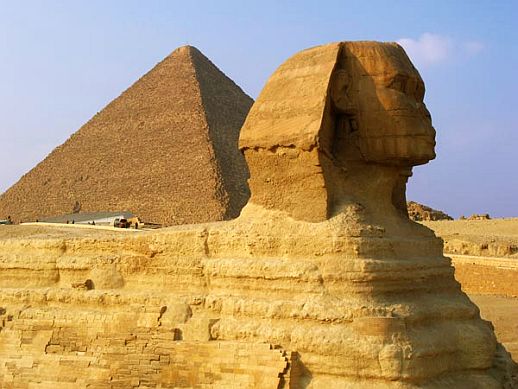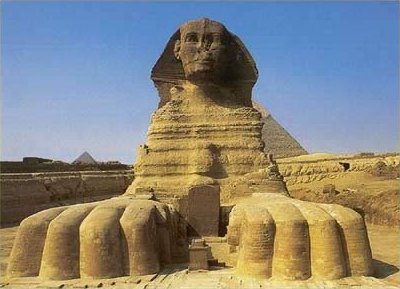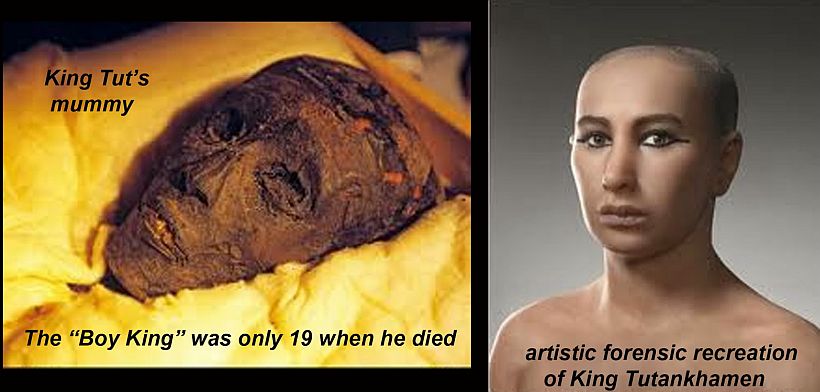 Everyone who were involved in the excavation of the tomb of Tutankhamun in egypt, died in the subsequent years.
Everyone who were involved in the excavation of the tomb of Tutankhamun in egypt, died in the subsequent years.
When members in the Howard Carter group died, the curse of the Pharaohs was brought more into the lime light. It is still one of the unexplained and unsolved mysteries of the world.
The curse was that who ever would disturb the sleep of a Pharaoh would die. The barriers were for the first time crossed after 3000 years in 1923.
There is a known curse in the tomb of Khentika Ikhekhi (9–10th dynasty), which contains an inscription: “As for all men who shall enter this my tomb… impure… there will be judgment… an end shall be made for him… I shall seize his neck like a bird… I shall cast the fear of myself into him“.
But no such curse has been discovered anywhere in tomb of King Tut-Ankha-Mun.
On February 17, 1923, a crowd of about 20 gathered in an antechamber deep within the Valley of the Kings, an elite Egyptian city of the dead.
When King Tutankhamen’s burial chamber was unsealed, tomb’s outer rooms had already revealed a treasure trove of Egyptian art and furnishings, excavators were hoping to find something more: the undisturbed mummy of King Tut.
Althought the treasure of Egypt’s more prominent kings and queens had long since been looted, Tutankhamen’s tomb lay protected for a millennia by the debris of an ancient construction project. Thieves had entered the tomb at least twice, they had never penetrated past the second shrine of the burial chamber.
During april 1923, only two months after the chamber’s unsealing, the project’s financier, George Herbert, Lord Carnarvon, died of complications from a mosquito bite. Then his dog died. Then other people connected to the dig began to die under suspicious circumstances.
 Sir Arthur Conan Doyle, creator of Sherlock Holmes, suggested that Lord Carnarvon’s death had been caused by “elementals” created by Tutankhamun’s priests to guard the royal tomb, and this further fueled the media interest.
Sir Arthur Conan Doyle, creator of Sherlock Holmes, suggested that Lord Carnarvon’s death had been caused by “elementals” created by Tutankhamun’s priests to guard the royal tomb, and this further fueled the media interest.
The first autopsy carried out on the body of Tutankhamun by Dr Derry found a healed lesion on the left cheek, but as Carnarvon had been buried six months previously it was not possible to determine if the location of the wound on the King corresponded with the fatal mosquito bite on Carnarvon.
In 1925, the anthropologist Henry Field, accompanied by Breasted, visited the tomb and recalled the kindness and friendliness of Carter. He also reported how a paperweight given to Carter’s friend Sir Bruce Ingham was composed of a mummified hand with its wrist adorned with a scarab bracelet marked with, “Cursed be he who moves my body. To him shall come fire, water and pestilence.” Soon after receiving the gift, Ingram’s house burned down, followed by a flood when it was rebuilt.
Howard Carter was entirely skeptical of such curses.
He reported in his diary a “strange” account in May 1926, when he saw jackals of the same type as Anubis, the guardian of the dead, for the first time in over thirty-five years of working in the desert.
It is believed that the god of death, Anubis is guarding Tutankhamun’s mummy.
Deaths attributed to King Tutankhamun Tomb Curse so far :
- Lord Carnarvon, financial backer of the excavation team who was present at the tomb’s opening, died on 5 April 1923 after a mosquito bite became infected; he died 4 months and 7 days after the opening of the tomb.
- George Jay Gould I, a visitor to the tomb, died in the French Riviera on 16 May 1923 after he developed a fever following his visit.
- Prince Ali Kamel Fahmy Bey of Egypt died 10 July 1923: shot dead by his wife.
- Colonel The Hon. Aubrey Herbert, MP, Carnarvon’s half-brother, became nearly blind and died on 26 September 1923 from blood poisoning related to a dental procedure intended to restore his eyesight.
- Sir Archibald Douglas-Reid, a radiologist who x-rayed Tutankhamun’s mummy, died on 15 January 1924 from a mysterious illness.
- Sir Lee Stack, Governor-General of Sudan, died on 19 November 1924: assassinated while driving through Cairo.
- A. C. Mace, a member of Carter’s excavation team, died in 1928 from arsenic poisoning.
- The Hon. Mervyn Herbert, Carnarvon’s half brother and the aforementioned Aubrey Herbert’s full brother, died on 26 May 1929, reportedly from “malarial pneumonia“.
- Captain The Hon. Richard Bethell, Carter’s personal secretary, died on 15 November 1929: found smothered in his bed.
- Richard Luttrell Pilkington Bethell, 3rd Baron Westbury, father of the above, died on 20 February 1930; he supposedly threw himself off his seventh floor apartment.
- Howard Carter opened the tomb on 16 February 1923, and died well over a decade later on 2 March 1939; however, some have still attributed his death to the “curse“.
King Tutankhamun’s mummmy was found to that of a 19 year old person and his face was recreated by artists.
Tutankhamun was the son of Akhenaten (formerly Amenhotep IV) and one of Akhenaten’s sisters, or one of his cousins. As a prince he was known as Tutankhaten. He ascended to the throne in 1333 BC, at the age of nine or ten, taking the throne name Nebkheperure. His wet-nurse was a woman called Maia, known from her tomb at Saqqara. A teacher was most likely Sennedjem.
CT scan taken in 2005 shows that he had suffered a left leg fracture shortly before his death, and that the leg had become infected. DNA analysis conducted in 2010 showed the presence of malaria in his system, leading to the belief that malaria and Köhler disease II combined led to his death.
Interestingly, Hon. Mervyn Herbert also died of Malaria.
When he became king, he married his half-sister, Ankhesenpaaten, who later changed her name to Ankhesenamun. They had two daughters, both stillborn.
Computed tomography studies released in 2011 revealed that one daughter died at 5–6 months of pregnancy and the other at 9 months of pregnancy. No evidence was found in either mummy of congenital anomalies or an apparent cause of death.
2 Movies were made in hollywood about King Tutankhamun Tomb Curse and even a video game (Curse of the Pharaoh: The Quest for Nefertiti) was developed based on this concept.

References :
